Andalucia has been a top destination for holidaymakers for over a century, with some of the best places to visit in Spain.
So what makes this area of Southern Spain so special? Why do people flock to this region every year?
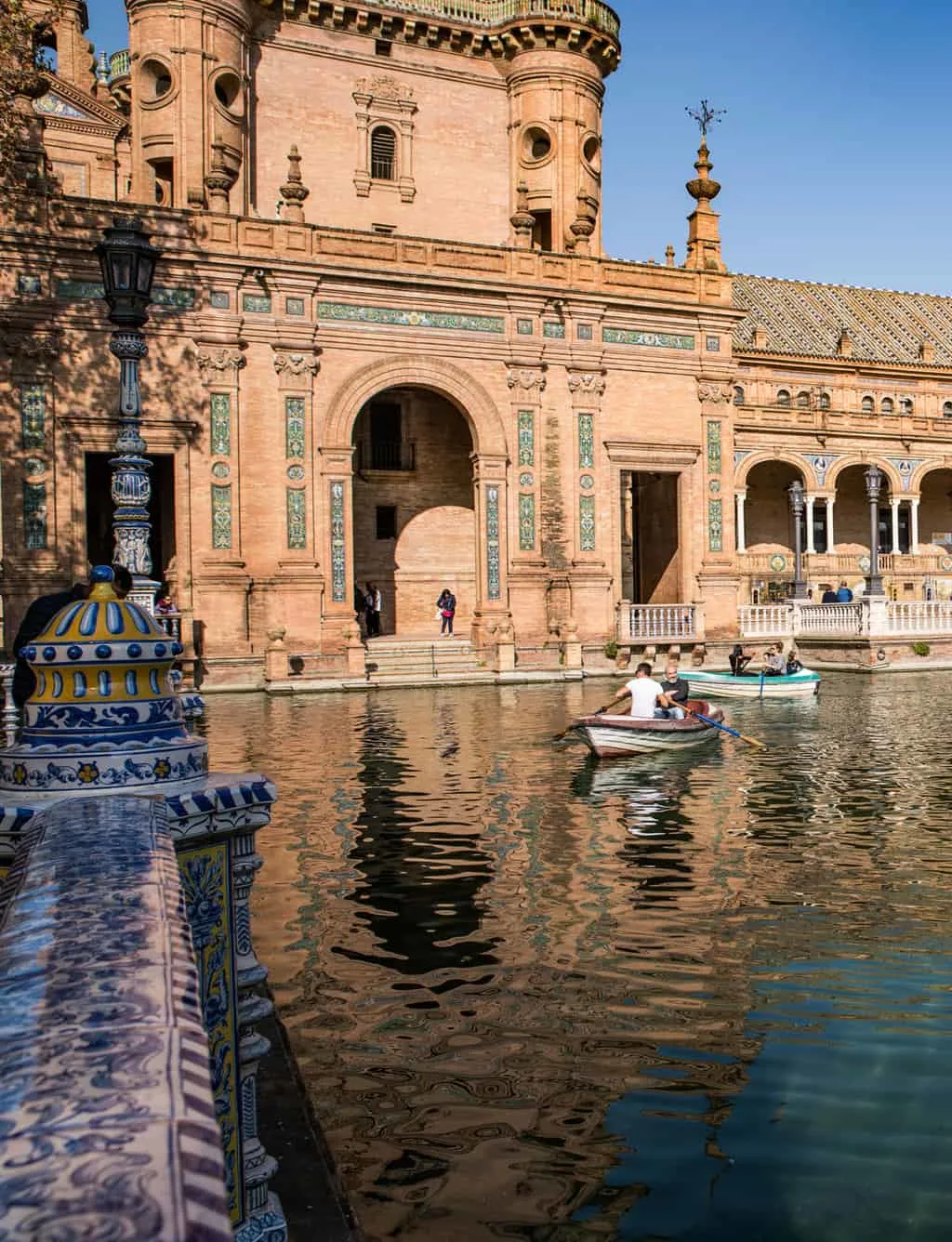
Apart from the steady and reliable annual levels of sunshine and almost guaranteed good weather, Southern Spain has so much to offer travelers.
From its beautiful hilltop white villages – the Pueblos Blancos (see our 3-day white villages and Rhonda itinerary from Seville), stunning natural hiking trails, seaside towns on the south coast of Spain, to natural parks, and historical sights.
Still not convinced? Then see our top tips for the best places to visit in Southern Spain, and you’ll see why so many fall for this charming part of the Iberian Peninsula.
Five Best Villages to Visit in Southern Spain
The whitewashed villages of Southern Spain lie like collections of white dice lined up by a river, scattered alongside a beach, or clustered on a hilltop in the Sierras.
Each has its unique atmosphere, and many make a great day trip from the main centers such as Màlaga, Seville, or Grenada.
Montefrío, Granada
Montefrío was once an important border stronghold protecting the interests of its Nasrid rulers in Grenada.
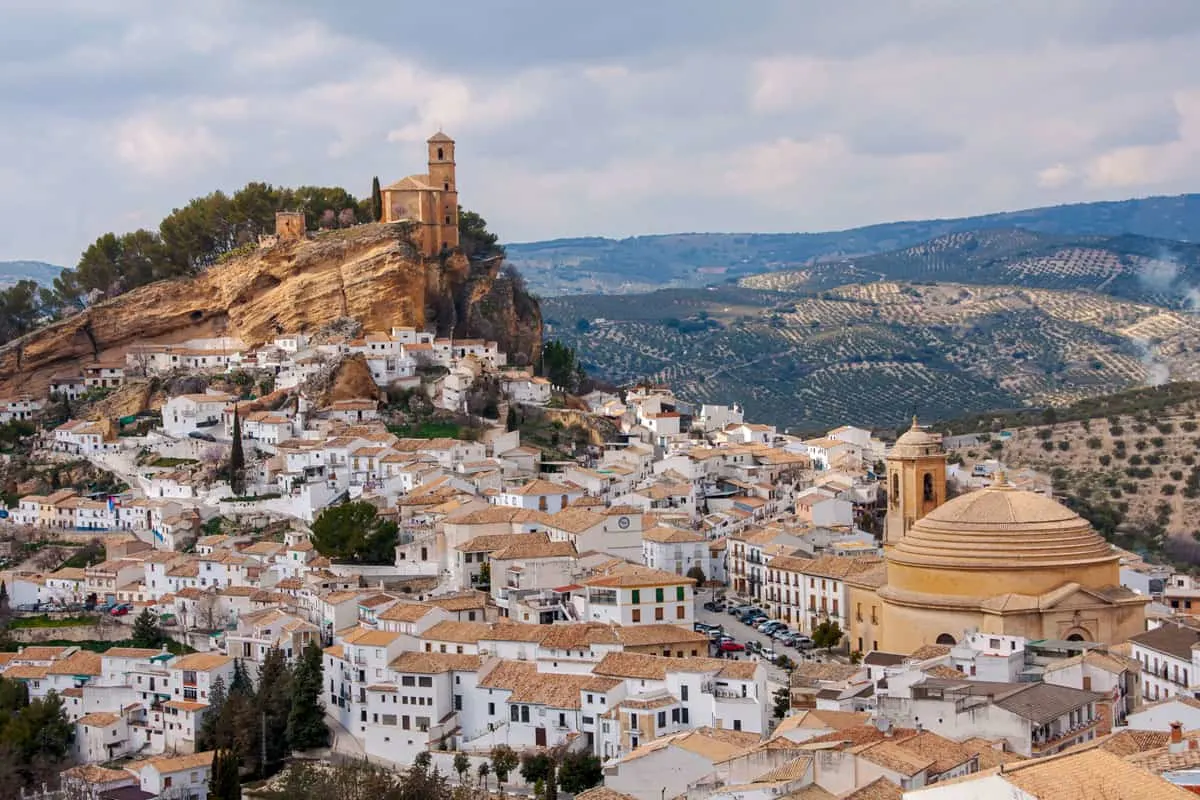
It looms high above twin ravines dominating the local landscape, littered with evidence of prehistoric Dolmen builders.
La Peña de los Gitanos, or the Sorrows of the Gypsies, is an archaeological site that reveals signs of continuous occupation by humans from prehistory to the present day, with over a hundred megalithic burials.
Entry is €5, or €10 if you want the guided tour.
Frigiliana, Málaga
Frigiliana is perhaps the prettiest of all the white villages in Andalucia, with its patterned cobblestone streets, blue-painted doors, and window shutters.
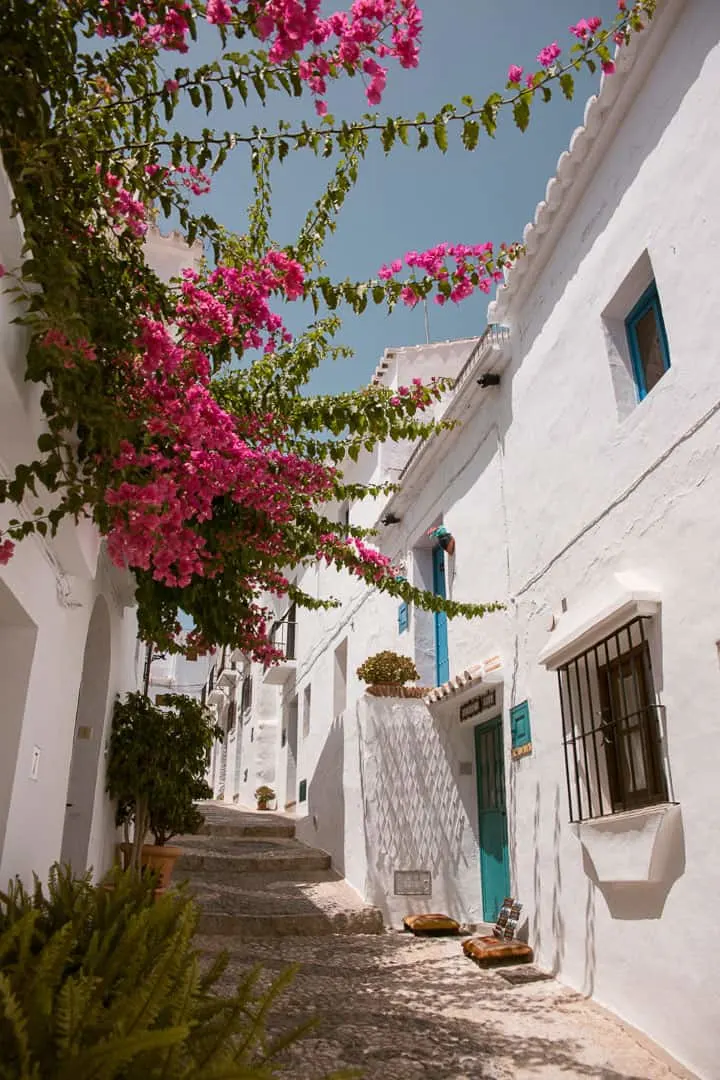
Visit the old quarter, the Mudejar neighborhood, the Fuente Vieja (old fountain), and the nearby Castilo de Lizar, the ancient Moorish castle. The castle dated back to the ninth century and was one of the final Arabic strongholds during the Catholic wars in 1485.
The beautiful Renaissance Palace of the Counts of Frigiliana was built using materials taken from the castle in the 1500s. Today, it is used as a factory producing cane syrup (molasses) for Nuestra De del Carmen and is the only traditional factory of this kind still working in Europe.
The building, known as “El Ingenio,” with gorgeous geometric pattern paintings on its facade, is one of the city’s most distinguishable landmarks, drawing tourists to admire its stunning architecture.
Tour Recommendations for Frigiliana
- From Málaga: Guided Day Trip to Villages Nerja & Frigiliana – 8 hrs
- From Granada: Skip-the-Line Nerja Cave and Frigiliana Day Trip – 7 hrs
- Frigiliana: Private Walking Tour with Personal Guide – 1.5 hrs
Agua Amarga, Almería
Agua Amarga is a gorgeous seaside village where you can enjoy authentic, traditional coastal life in Southern Spain.
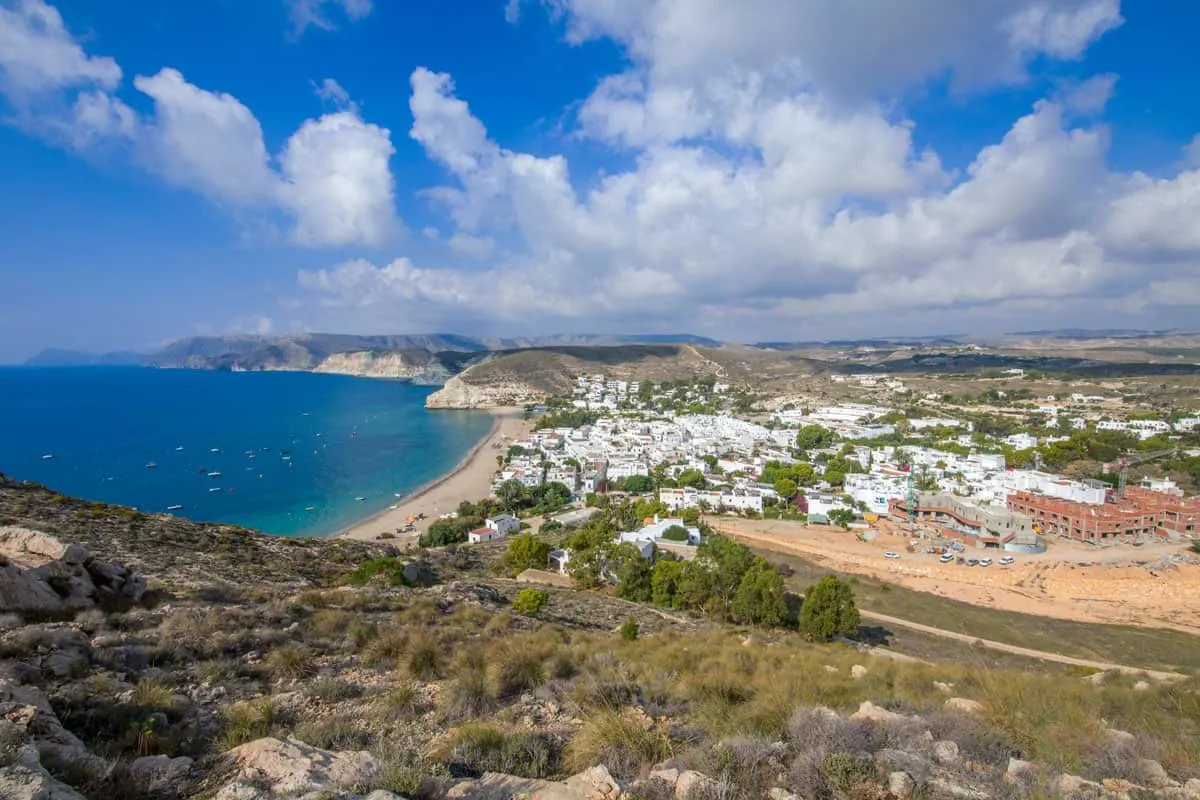
This former mining village isn’t widely known on the traditional tourist trail, so it has yet to be transformed into a major resort.
Hemmed in by high cliffs, tourist development might be a long way off, so enjoy its unspoiled beach and beachfront bars and restaurants.
Agua Amarga is a favorite with local Spanish residents who go to soak up its authentic flavors. Indulge in fresh fish caught just off the coast by local fishers with centuries of tradition of working the local waters.
The village is also located deep within the Cabo de Gata-Nijar National Park – fifty kilometers of protected coastline where you can see migrating pink flamingos and dozens of other bird species.
Tour Recommendations for Agua Amarga and Cabo de Gata – Nijar National Park
Gaucín Malaga
Gaucín is situated high in the Sierra Mountains but is still easy to visit on a day trip from Màlaga.
Located 626 m above sea level (2,053 feet), it is called the ‘Balcony of the Serrania’ because of the magnificent views across the Mediterranean to Gibraltar and Morocco.
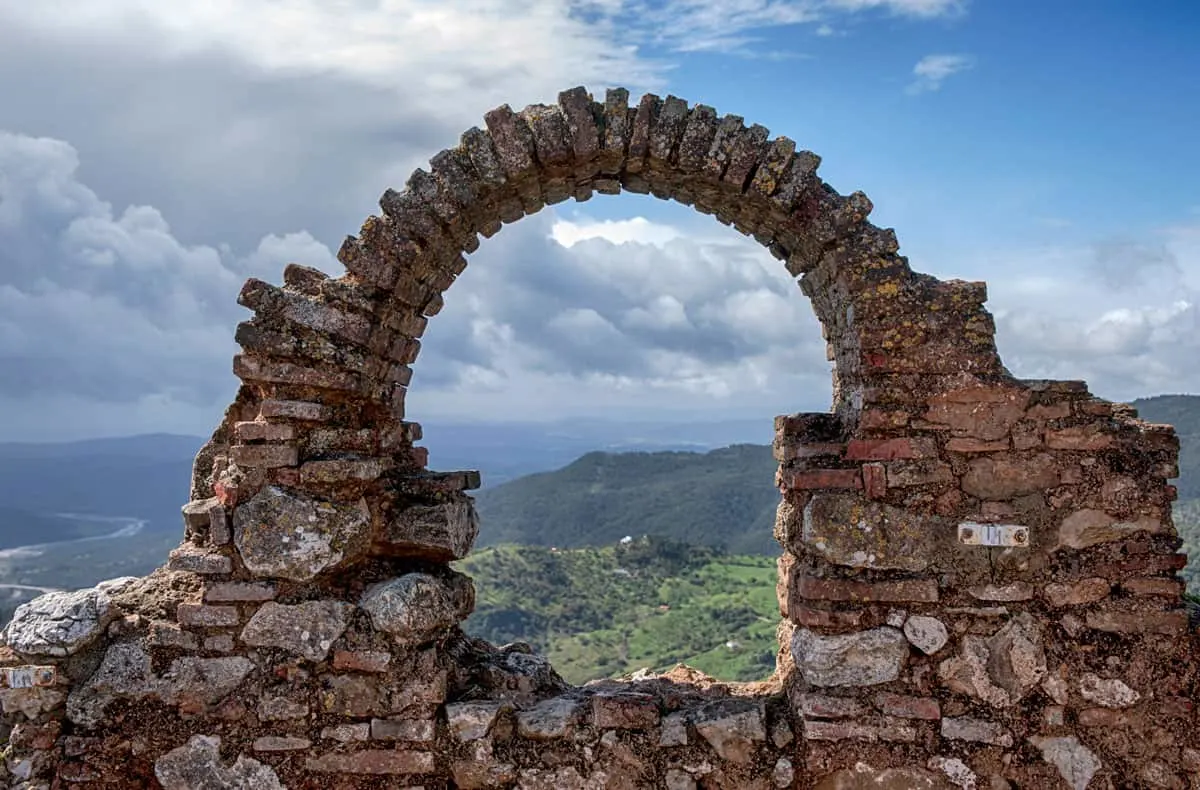
If you visit on Easter Sunday, you can witness the “Roped Bull” festival. Two bulls, one in the morning and one in the afternoon, are let loose to roam through the steep streets of Gaucin.
Locals and visitors run in front of and behind the bull, trying desperately to avoid being gored. The idea is not to defeat the bull but to better him with your agility and avoid being gored by his horns.
This is a dangerous fiesta, and often people are injured despite the rope around the bull’s neck that is supposed to allow the men to drag the bull away if it charges at someone.
It is unknown how far the tradition dates back, but it is believed to have pagan roots, as even the town’s oldest residents remember it happening all their lives.
Also in the village is the picturesque Castle of Eagles, Castillo de Aguilar, a series of Roman fortifications that the Moors reinforced in the tenth century. It is a terrific site for birdwatching, where you can regularly see eagles and kestrels taking to the skies over the mountains.
Cazalla de la Sierra, Seville
Cazalla de la Sierra is perhaps the largest village in this short list of five, and it is definitely the most alcoholic, with a long local tradition of organic winemaking, production of cherry brandy, and aniseed liqueur.
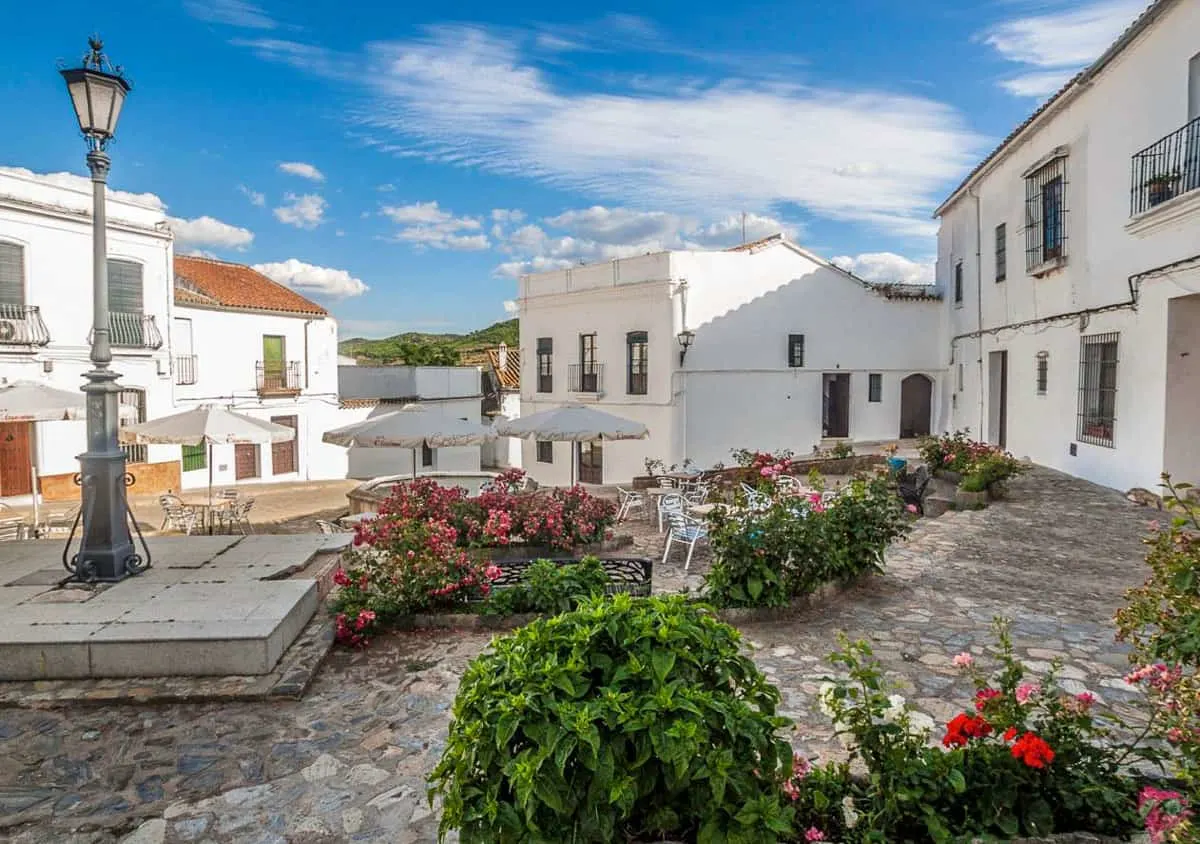
It might be the most significant reason why there seem to be more festivals in Cazalla de la Sierra than in any other village in Southern Spain. Even some of the older churches in the town have been deconsecrated and converted into distilleries that are open to visitors for sampling.
One church still used for its original purpose is well worth a visit. The Iglesia Parroquial de Nuestra Señora de Consolación is a fine example of the local Mudejar architectural style.
Four Best Natural Parks in Southern Spain
Following the rapid industrial development of Southern Spain over the last century, protecting the region’s natural ecology has become much more critical.
Today there are three National Parks in Andalucia, covering thousands of square kilometers, which add up to nearly a fifth of Andalucia’s area.
Doñana
One of the best day trips from Seville for nature lovers, Doñana is a vast wetland area home to spoonbills, bee-eaters, flamingos, and a wealth of other birdlife and plants.
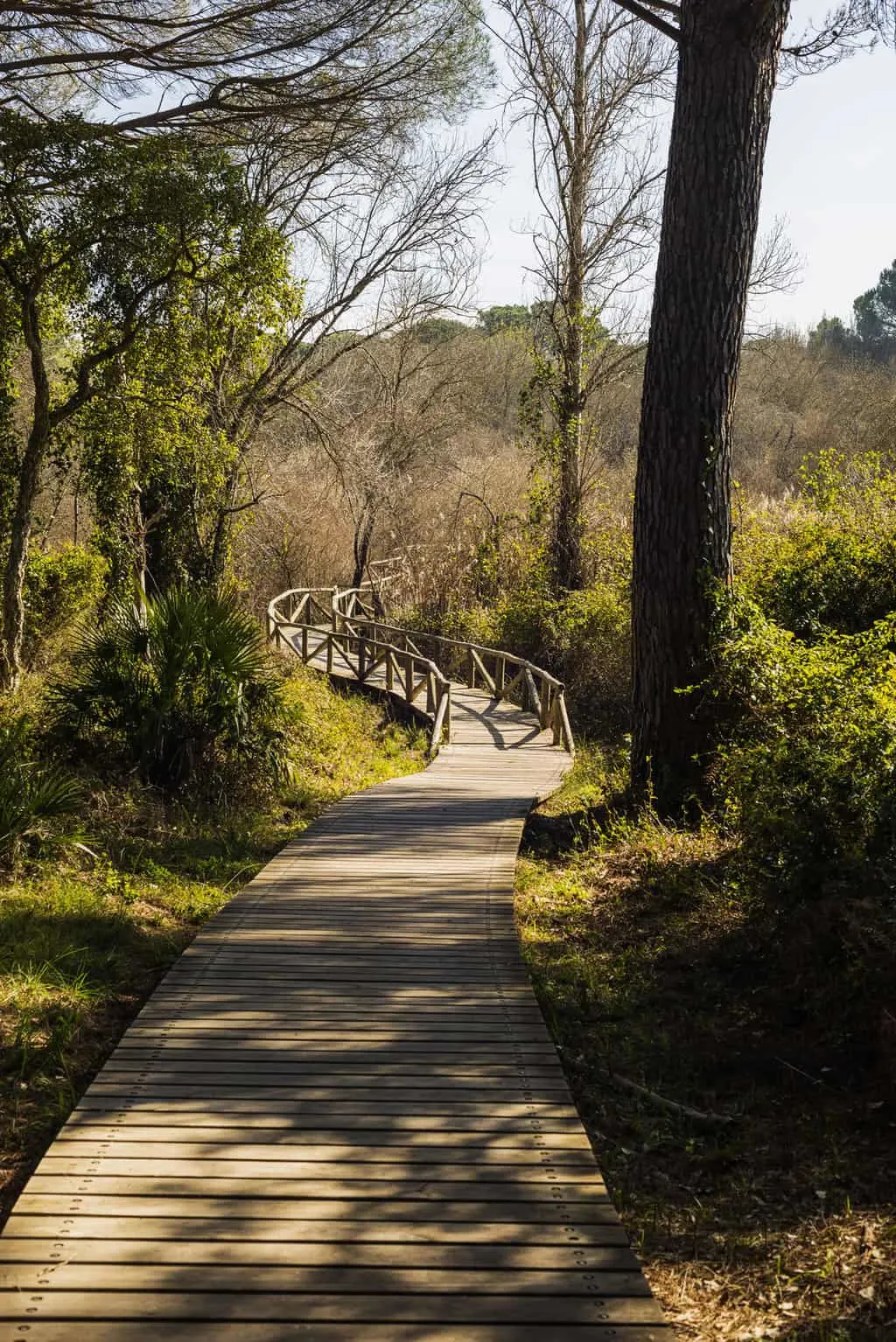
A natural park surrounds it, covering over 1,000 square kilometers together, preserving habitat for the Iberian Lynx and the Spanish Imperial Eagle.
You can book guided tours, and while it is rare to spot a lynx, deer and wild boar are regularly spotted. Contact the tour companies at least a month in advance as they are booked up rapidly, especially in the high season.
Tour Recommendations for Doñana National Park
Sierras de Cazorla, Segura y Las Villas
The largest protected park in Southern Spain, the Sierras de Cazorla, Segura y Las Villas, covers an area of more than 2,000 square kilometers.
A lot of the park is accessible by road, but hiking away from the tarmac won’t take long.
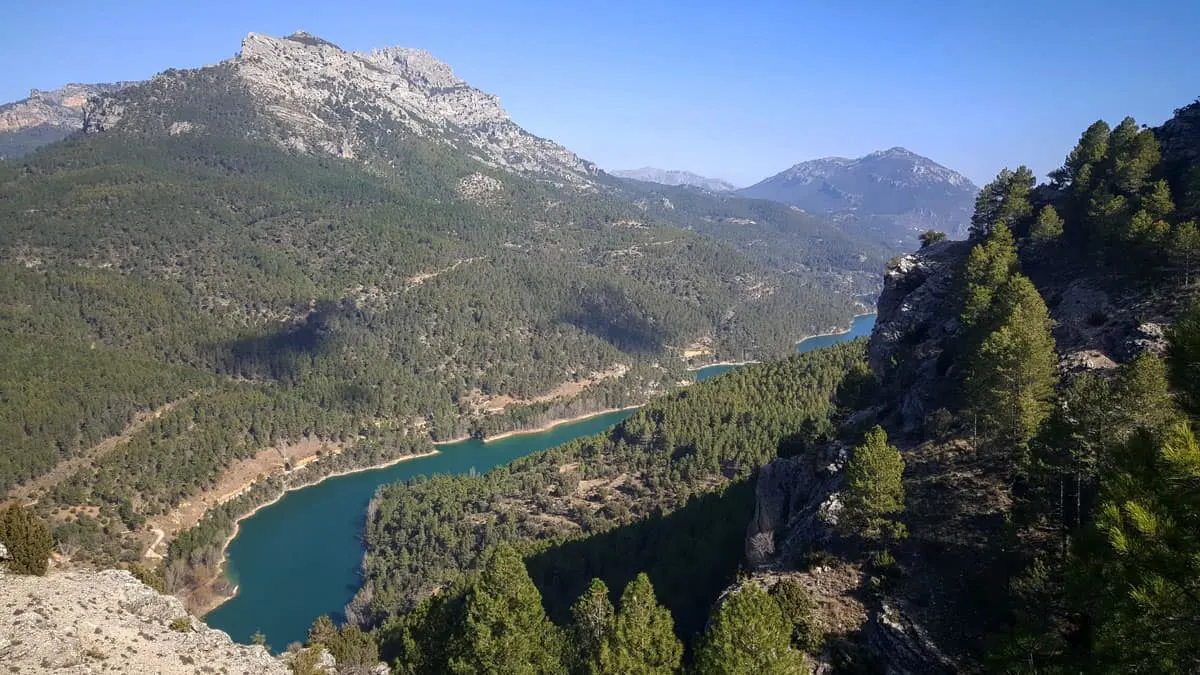
It is possible to sight wild boar and ibex, deer, and wild sheep. In the skies above the mountains, look out for eagles and vultures.
The lammergeier (bearded vulture) has been recently reintroduced, having been declared extinct in the region in the 1980s. They are the largest wild bird of prey in Southern Spain.
Tour Recommendation for Sierras de Cazorla, Segura y Las Villas
Sierra Nevada
If it’s ibex that you want to see, or if you want to tackle Southern Spain’s highest peak, the 3,479 meter high (11,414 feet) Mulhacén, head to the Sierra Nevada.
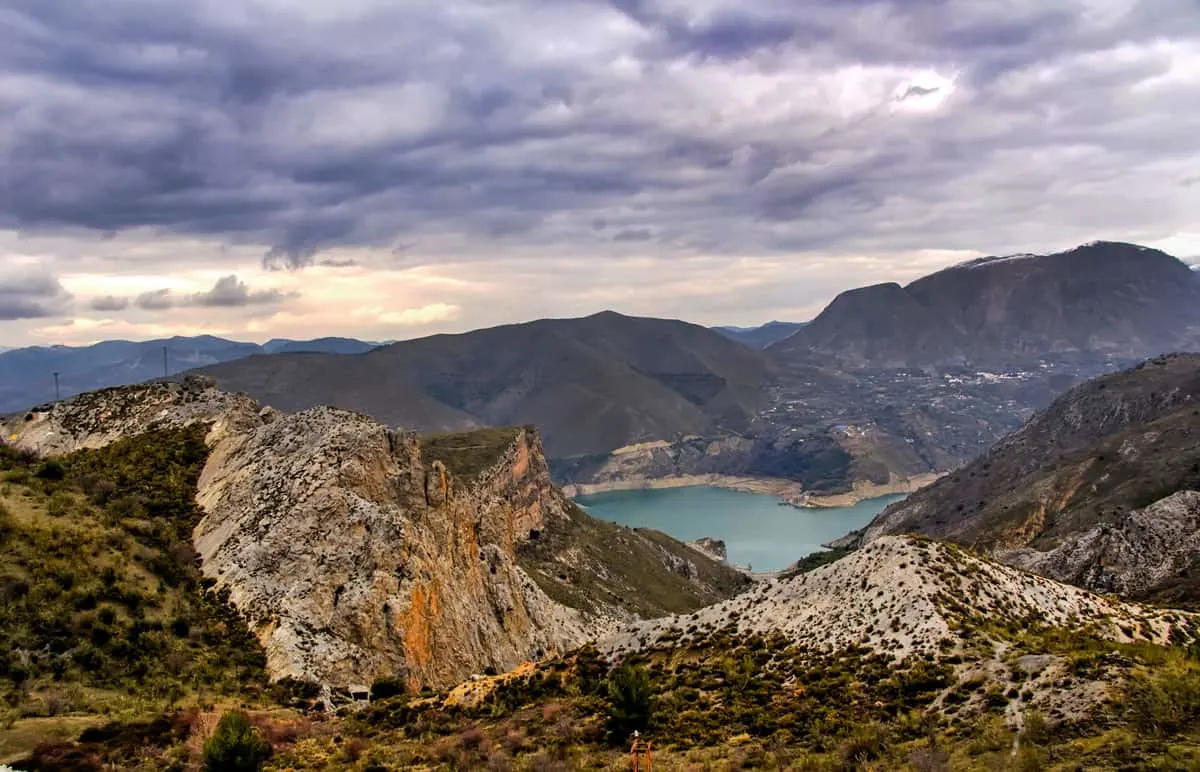
A bus will take you up the first 2,700 m (8,858 ft), after which a three-hour hike will get you the rest of the way.
In the Spring or Autumn months, when the weather is neither too hot nor too wet, you can follow the valleys of the Apujarras through some of the finest scenery in Southern Spain, visiting white villages along the way and spotting ibex, deer, and boar.
Trevelez in the Sierre Nevada is the highest village in Spain at an altitude of 1,750 meters above sea level (5,741 ft) and is famous for the dryness of its ham.
Tour Recommendations for Sierra Nevada
- From Granada: Alpujarra Experience: Historical Mountain Villages – 8-10 hrs
- Sierra Nevada Small Group E-Bike Tour – 5 hrs
- From Granada: Sierra Nevada 4WD Safari Small Group Tour – 7 hrs
Sierra de las Nieves National Park
The youngest National Park in the area, it was upgraded to this status in May 2021. It is smaller than the others at 600 square km and is focused on Mount Torrecilla. The park is rugged terrain and has been largely uninhabited for centuries.
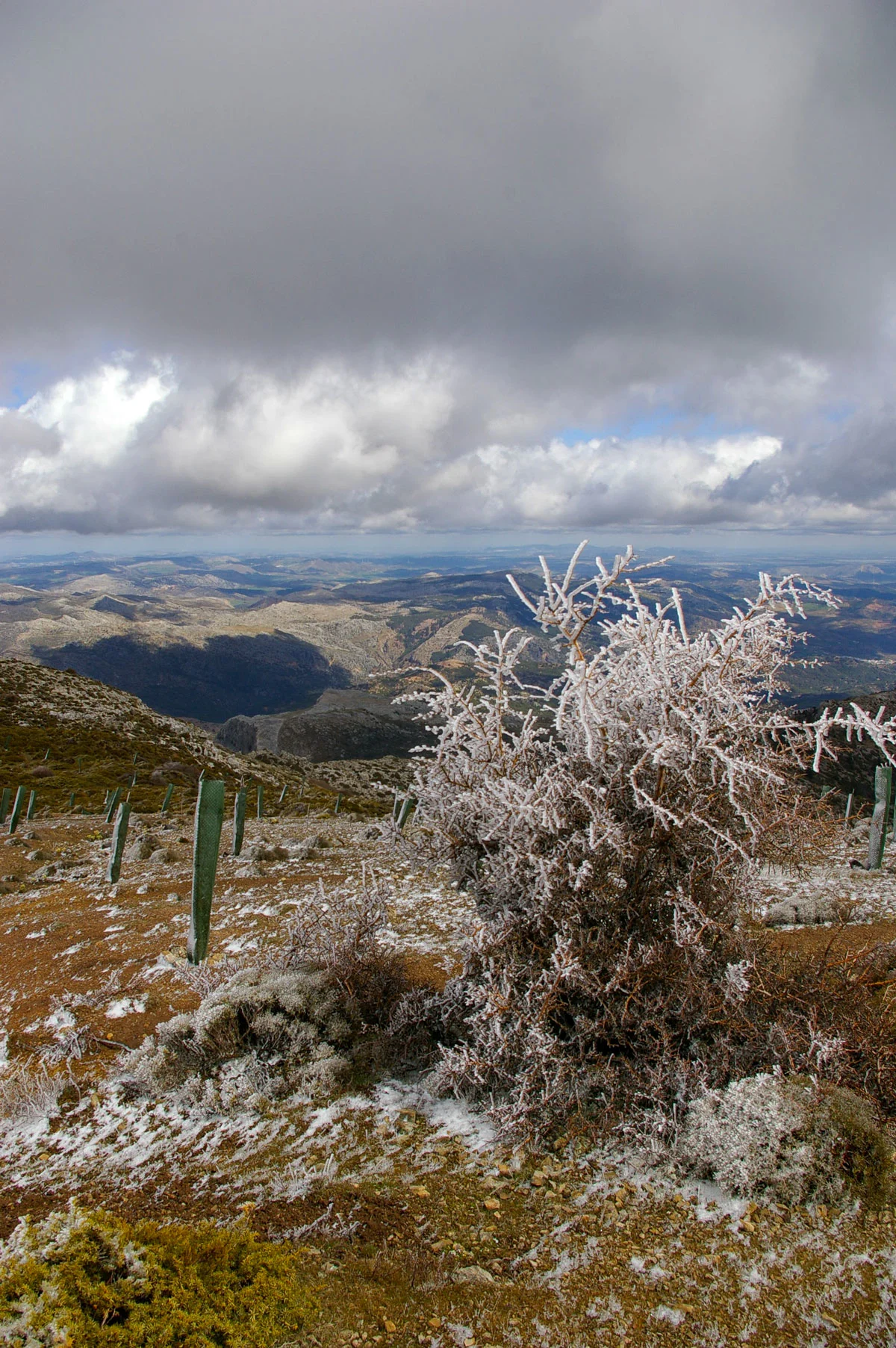
As a result of the abandonment of the area, a wide range of regional flora exists, studied by botanists from all over the world.
It is a beautiful and wild area ideal for hiking and birdwatching. However, there is almost no accommodation within the park, and camping is forbidden in the Summer months.
Three Best Historical Sites to Visit in Southern Spain
Southern Spain boasts many sites of historical interest, with almost every town, village, or city possessing a castle, palace, or prehistoric structure.
UNESCO recognizes several exceptional sites in the main cities of Southern Spain.
Granada
The Alhambra Palace is possibly one of Spain’s most famous historical sites.
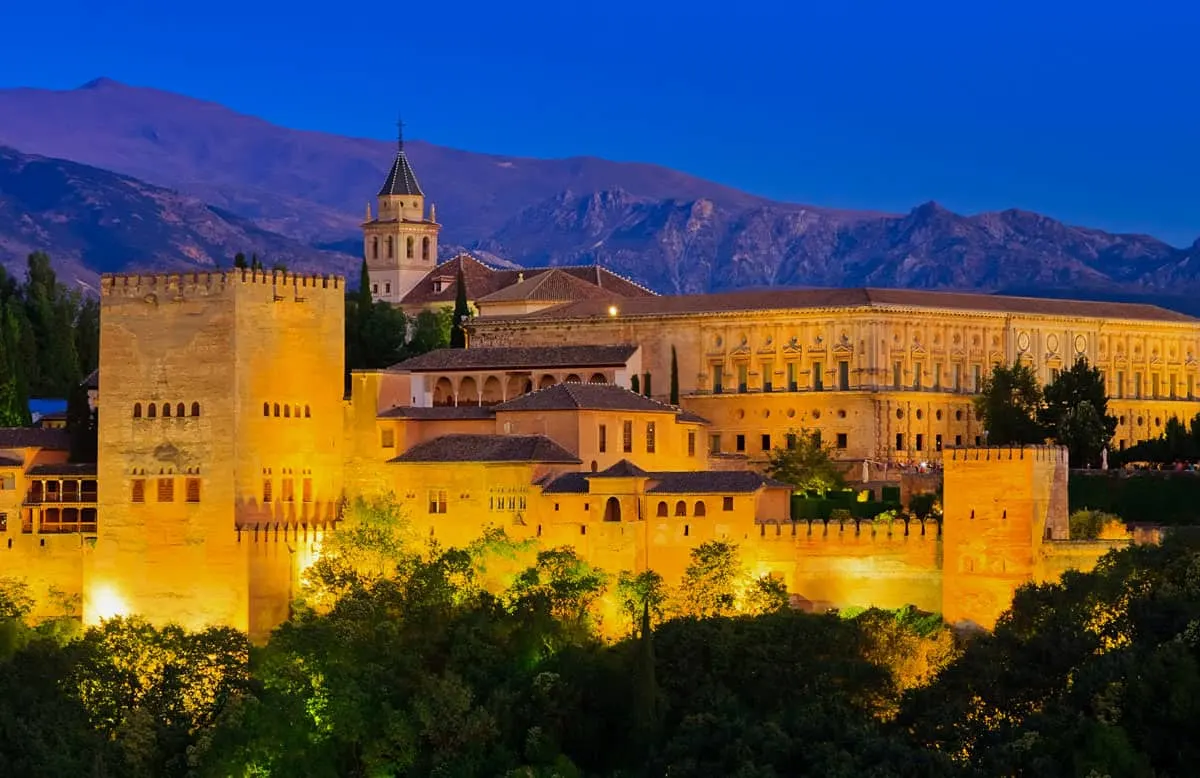
Built for emperors and rivaling the Topkapi Palace at the heart of the Ottoman Empire in Istanbul, it has survived as a remarkable testament to the architectural prowess of its builders.
No visit to Granada would be complete without a visit to the Alhambra. Pre-book tickets are highly recommended, especially during peak season months – See here for skip-the-line ticket bookings and guided tours of the Alhambra. See our guide for more incredible things to do in Granada.
Seville
One of the most beautiful cities in the south of Spain, there are many fantastic historic sites to see in Seville.
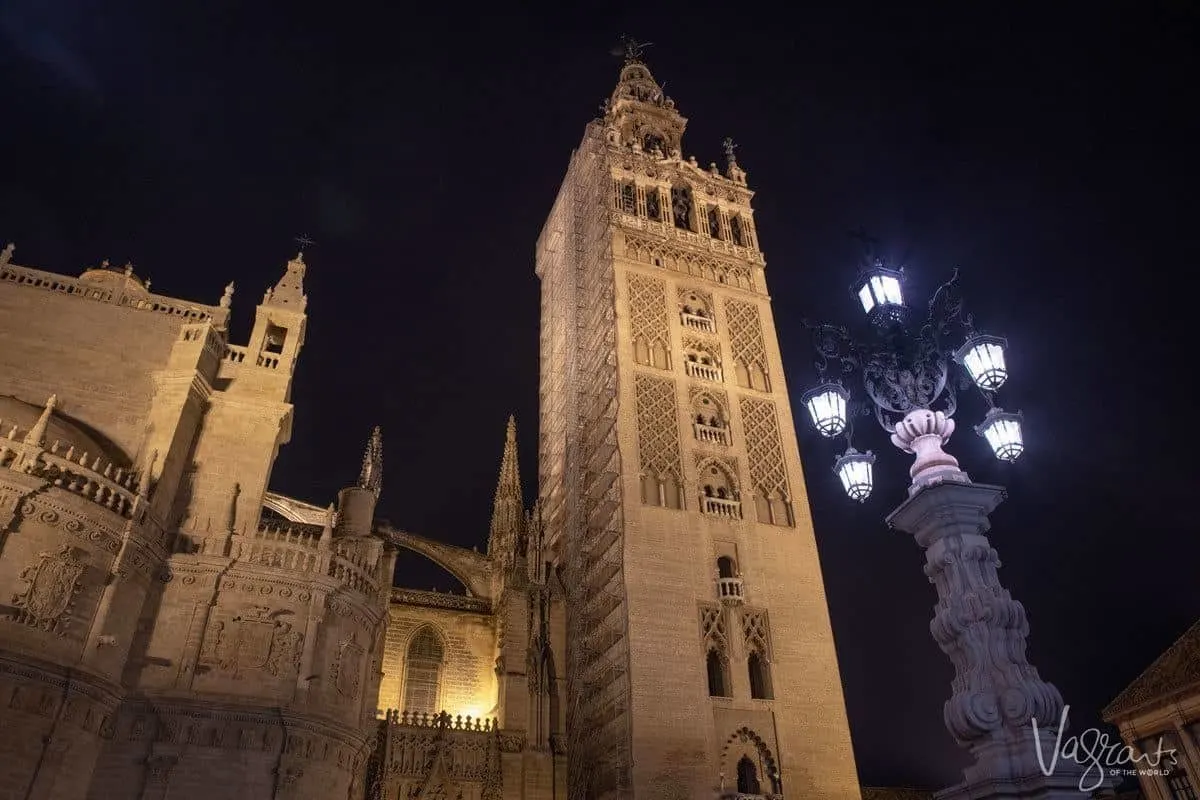
The complex in the heart of the city that comprises the Cathedral, Alcázar, and Archivo de Indias tells a story of the golden age of Spain, of seven-hundred years of history.
The cathedral was built on top of a mosque, and once a minaret, the tower was adorned with a Renaissance bell tower. The cathedral was the largest Christian building of the Gothic age and still dominates the city’s center.
For 200 years, Seville was the gateway to trade in Latin America, making it one of Southern Spain’s most important cities.
See our guide on the Best Things to do in Seville to help plan your time and our guide on the best places to stay in Seville to help you choose the right accommodation.
Cordoba
In the eighth century, Cordoba was a Moorish city that boasted more than three hundred mosques, hoping to outdo the rest of the emergent Muslim world.
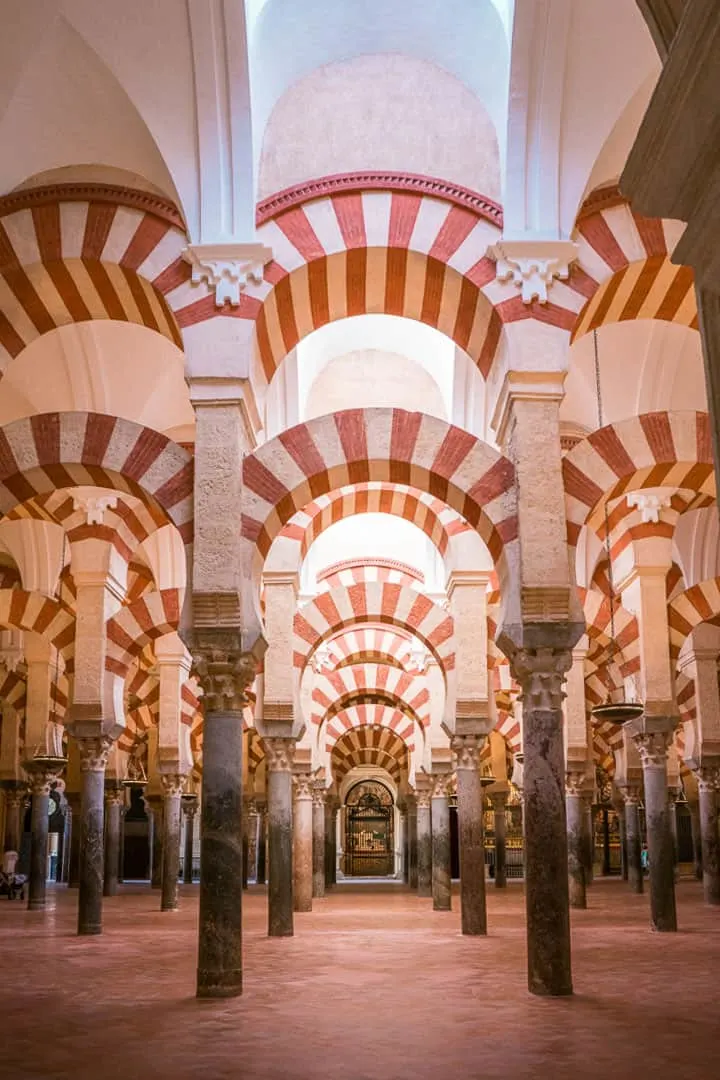
The Great Mosque was only second in size to the Holy Mosque in Mecca when it was first built, surpassed only when the Blue Mosque was built in Istanbul.
In the thirteenth century, the mosque was converted into a cathedral and today presents a fascinating cultural and architectural hybrid.
Tour Recommendations for Córdoba
Are You ready to Discover the South of Spain?
Southern Spain is a region of great beauty and diversity. From the charming villages of the Pueblos Blancos and stunning coastal regions to natural areas of great beauty and historical sites in some of the most popular cities in Spain.
With its diverse landscapes, vibrant culture, rich history, and incredible gastronomy, Southern Spain should be at the top of everyone’s travel list. Whether you’re looking for a relaxing beach holiday or an adventure-filled exploration of nature and culture, Southern Spain has it all.
